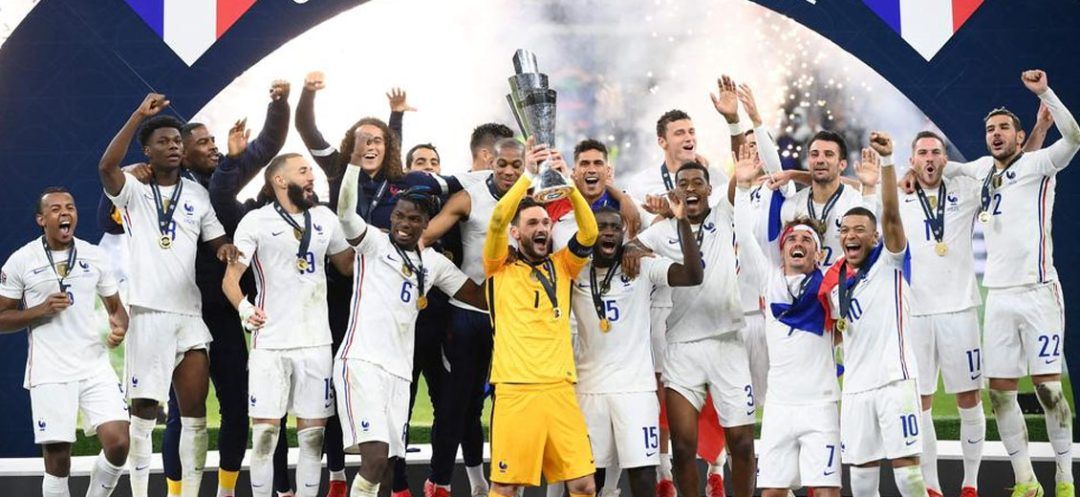
Since its creation in 2018 by UEFA, the Nations League has shaken up the international calendar. Gone are the inconsequential friendly matches; in their place is a modern competition where every game matters. But how exactly does the Nations League work, and why has it become a must-attend event for football’s major nations? Let’s break it down.
Can’t remember the rules from the last three editions of the Nations League, which you never really understood? Don’t worry, the 2024-2025 edition (which has just kicked off) will be different yet again. Created by the Union of European Football Associations (UEFA) to “replace” friendly matches during the two years between major tournaments, the competition brings together 55 European nations, divided into four leagues (A to D) based on their UEFA ranking. Each league contains four groups of four teams (and a fifth group with three teams in League D).
The new twist? The introduction of quarter-finals and promotion/relegation playoffs. The top two teams from each group will secure a spot in the quarter-finals, played over two legs in March of next year. The third-place team will face a second-place team from League B in a playoff for promotion/relegation, also in March. The last-place team will be relegated. The Final Four (semi-finals and finals, played in a single country) will take place in June.
Results from the Nations League will impact qualification for the 2026 World Cup. For example, if Germany reaches the semi-finals, they will compete in a qualifying group of four teams (the top team qualifying directly, the second-place team entering playoffs). Otherwise, they’ll be placed in a group of five. The Nations League can also provide a safety net: the four best group winners who don’t finish in the top two of their World Cup qualifying groups will be given a playoff spot.
Still didn’t fully grasp it? Don’t question your intelligence. As England’s manager Gareth Southgate puts it, “Sport knows how to invent competitions that remain baffling, even after reading the rulebook!”
But for the players, this competition is of great importance. “The Nations League is an opportunity to compete with the best, to raise your level and to prepare for the big tournaments,” said Antoine Griezmann after France’s victory in the 2021 edition.
A format that quickly proved its worth
Though the Nations League was initially met with skepticism, it quickly gained traction. The inaugural edition saw Cristiano Ronaldo’s Portugal win in 2019, while Didier Deschamps’ France claimed the title in 2021, and Spain took home the trophy in 2023. High-intensity matches, packed stadiums and hard-fought finals eventually won over even the biggest doubters.
Today, the competition is a staple in the international calendar and even allows dream nations like Hungary or Finland to compete with the best. "It's an exciting format for smaller and medium-sized nations that can now aim for big achievements," explained Julian Nagelsmann, Germany's head coach.
Thrilling matches in the 2024 edition
In the end, the complexity of the rules doesn’t really matter. What truly counts is the spectacle provided by the great matchups. As UEFA president Aleksander Čeferin said during the tournament's launch, “We wanted to bring back the stakes to these international matches and offer a real spectacle to the fans.” The Nations League is the perfect answer to this ambition. So, why worry about complex rules when you can simply enjoy thrilling matchups like Italy vs. France or Netherlands vs. Germany?
Read more




Comments